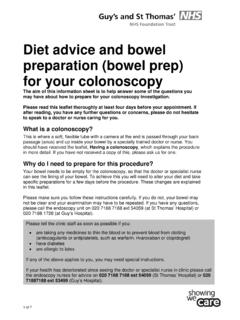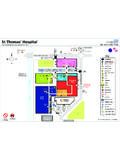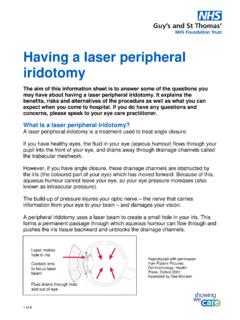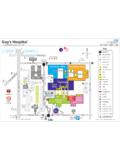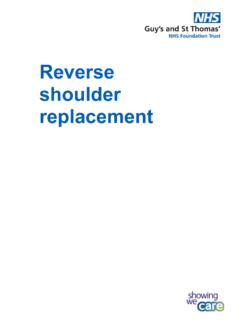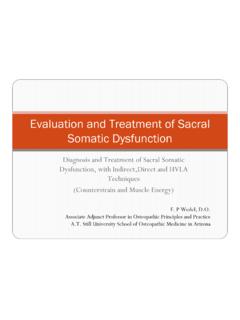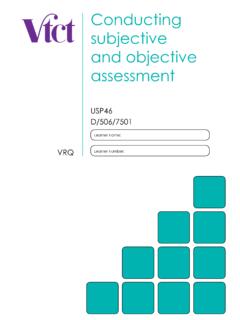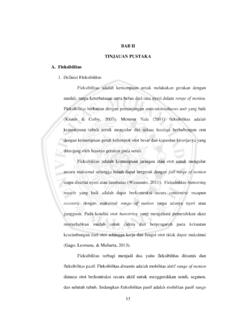Transcription of Spinal injections - Guy's and St Thomas' NHS Foundation Trust
1 16 Contact us Pharmacy Medicines Helpline If you have any questions or concerns about your medicines, please speak to the staff caring for you or call our helpline. t: 020 7188 8748 9am to 5pm, Monday to Friday Patient Advice and Liaison Service (PALS) To make comments or raise concerns about the Trust s services, please contact PALS. Ask a member of staff to direct you to the PALS office or: t: 020 7188 8801 at St Thomas t: 020 7188 8803 at Guy s e: Knowledge & Information Centre (KIC) For more information about health conditions, support groups and local services, or to search the internet and send emails, please visit the KIC on the Ground Floor, North Wing, St Thomas Hospital.
2 T: 020 7188 3416 Language Support Services If you need an interpreter or information about your care in a different language or format, please get in touch using the following contact details. t: 020 7188 8815 fax: 020 7188 5953 NHS Choices Provides online information and guidance on all aspects of health and healthcare, to help you make choices about your health. w: Leaflet number: 3832/VER1 Date published: October 2013 Review date: October 2016 2013 Guy s and St Thomas NHS Foundation Trust Spinal injections 2 15 Notes 14 Will I have a follow-up appointment?
3 Yes, six to eight weeks after your surgery. We will send you an appointment letter but if you have not heard from us within four weeks after leaving hospital, please contact us. At this appointment you may be seen by a physiotherapist or a doctor depending on your pre-operative symptoms, or you may have a telephone follow-up by a clinical nurse specialist. Contact details If you have any concerns about your treatment, please contact the following (Mon Fri, 9am 5pm): Mr Lucas and Mr Ember s secretary on 020 7188 4468 Mr Lam s , Mr Fakouri s and Mr Liantis secretary on 020 7188 4467 Please contact your GP or attend your local A&E department if you have any urgent medical concerns outside these hours.
4 3 The aim of this leaflet is to help answer some of the questions you may have about having a Spinal injection. It explains the benefits, risks and alternatives, as well as what you can expect when you come to hospital. If you have any questions or concerns, please do not hesitate to speak to a doctor or nurse caring for you. What is a Spinal injection? Your spine is made of a number of bones called vertebrae. They are connected to one another allowing your spine to move and protecting the Spinal cord and nerves.
5 These strong interconnections are made up of intervertebral discs (which act as your spine s shock absorbing system) and facet joints (which connect the vertebrae to one another). Due to a variety of reasons, these structures can wear down and, with time, can be a cause of pain. Spinal injections deliver medicines into or near your spine, normally around the source of your pain. There are two medicines used in Spinal injections : local anaesthetic which is used to block pain from the injected area steroid which is used to reduce swelling and inflammation in the injected area.
6 The local anaesthetic injection gives an immediate relief while the steroid injection takes effect. The aim of a successful Spinal injection is to ease your back or leg/arm pain, or sometimes both, for a period of up to three months. 4 There are four injection techniques that are commonly used by your doctor: Epidural injection targets the space that surrounds your Spinal cord. Facet or sacroiliac joint injection targets the joints that link the bones of your spine. Nerve root injection targets individual nerves in your spine.
7 Discography targets the intervertebral discs between the bones of your spine. The type of Spinal injection you have will be based on your specific symptoms. What are the benefits why should I have a Spinal injection? Spinal injections are used for diagnostic or therapeutic purposes. A diagnostic Spinal injection can sometimes help your surgeon to plan the long-term management of your condition. It is very useful when the source of your pain has not been clearly identified before, and can determine which Spinal structure is causing your symptoms.
8 A therapeutic Spinal injection improves your symptoms with the use of local anaesthetic and steroids which reduce swelling and inflammation. This can be repeated periodically if it works well and will allow you to progress with other treatments such as physiotherapy. 13 What should I do if I have a problem? Please contact your GP if you experience any of the following: excruciating pain unlike your normal symptoms increasing redness, swelling or oozing around the injection site fever (temperature higher than C) sudden weakness or numbness which is not resolving sudden loss of bowel or bladder control severe headache which is not improved with painkillers.
9 12 A nurse will make sure that you are safe to move around and that you have passed urine before going home. If you have any concerns about your walking or controlling your bladder/bowel, you must tell a member of staff. You will need to arrange for a responsible adult to accompany you home. What do I need to do after I go home? It is essential that you continue to take painkillers as advised after your treatment. A pharmacist and/or nurse will discuss the management of you painkillers before you leave hospital.
10 The plaster can be removed after 24 hours and you can then have a bath or shower as normal. Before the plaster is removed, avoid getting the injection site wet. Generally, there are no restrictions after your Spinal injections once the post-treatment pain has settled down. You should be able to return to physiotherapy or other Spinal exercises within a week of your injection. Depending on the nature of your employment, you may wish to return to work after 72 hours. Please ensure that your employer is happy with this arrangement.
